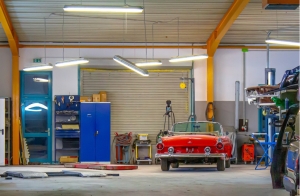
Did you know that 99.8% of Americans own refrigerators? While you may think refrigerators are only those usually seen at homes, some residences and businesses use walk in freezers to store food and produce.
Whether your fully stocked walk-in freezer runs perfectly or you're having issues, it's imperative to use suitable cooling and operating methods. Otherwise, the many foods stored and cooled in your walk-in freezer will spoil. Encounters with pathogens will also harm your customers and your business.
Read on to understand them, and keep your freezers up with the challenge.
Compressor Failures
Common walk-in freezer issues due to compressor failures are usually related to inadequate refrigeration or a lack of cooling. A dirty or faulty condenser coil, a bad compressor relay, or a blocked suction line can cause a malfunctioning compressor.
Start with a visual inspection to check for signs of corrosion, an accumulation of dirt, or specific damage to wiring. If the visual inspection reveals nothing, check the compressor for proper voltage, amperage values, and continuity.
If all these tests come back negative, inspect the run capacitor, the contactor, and the overload protector. In some cases, replacing the compressor is the only viable option, and a qualified technician should handle your walk in coolers and freezers.
Electrical Malfunctions
Some common electrical malfunctions include a burnt-out compressor motor, blown fuses, faulty or worn wire connections, and improper wiring. Unplug the unit and perform a visual inspection of the electrical wiring to see if any wires are discolored, frayed, or detached from their terminals.
You may require a professional or electrician to safely diagnose and repair the affected components of your new or used walk in freezers. Also, you can opt for a GFCI (ground fault circuit interrupter) to protect the unit from sudden power surges.
Freezer Leaks
Walk-in freezers commonly experience leaks due to temperature changes and wear and tear. While these leaks can cause significant damage, fixing them is relatively straightforward.
First, inspect the freezer's walls, floors, and roof for leaks. If a leak is found, determine the source of the leak. The most common sources of leaks are seal degradation, water valves and piping, and wall joints.
Depending on the source, the leak can be patched by caulking or replacing the affected areas. Using a high-quality caulk or sealant is essential, as it will ensure that the seal remains durable. Take a look at some of the best walk-in freezers if you need to replace your unit.
Defrost Cycling Issues
Defrost cycling problems can be caused when frost accumulates on your walk in freezer coils, blocking airflow and reducing cooling efficiency. Troubleshooting begins by checking the temperature settings.
If the settings are correct, the next step would be to check the operations of the temperature control system. Faulty sensors or bad wiring can interfere with the system's proper functioning.
If the automatic defrost cycle is broken, then frost build-up can occur quickly. Don't forget to examine the defrost timer. It can prevent the defrost cycle from functioning correctly if faulty or broken.
Know How to Care and Troubleshoot Issues With Your Walk In Freezers
Common walk-in freezer issues can be troublesome, but fortunately, there are steps you can take to find and troubleshoot them. Educating yourself on potential problems and how to fix them can save you time and effort.
So, save yourself a headache and take the time to learn how to identify and resolve common issues with walk in freezers. Contact a professional if further assistance is needed.
Want to learn more? Check out our website today and never miss a beat!





